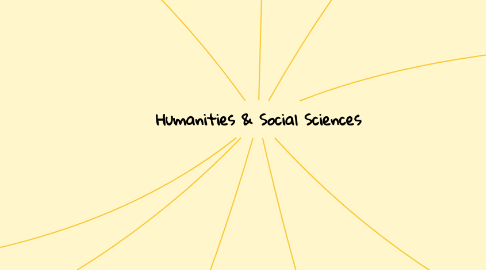
1. Understanding Culture, Society and Politics
1.1. Key points for the understanding of culture, society, and politics
1.1.1. Sharing of social and cultural backgrounds
1.1.2. Observations about social, political, and cultural behavior and phenomena
1.1.3. Observations on social, political,and cultural change
1.1.4. Definition of anthropology, political science, and sociology
1.2. Definition of Culture and Society from the perspectives of anthropology and sociology
1.2.1. Society as a group of people sharing a common culture
1.2.2. Culture as a “‘that complex whole which encompasses beliefs, practices, values, attitudes, laws, norms, artifacts, symbols,knowledge, and everything that a person learns and shares as a member of society.”
1.2.3. Aspects of Culture
1.2.4. Ethnocentrism and Cultural Relativism as orientations in viewing other cultures
1.3. Human Bio cultural and Social Evolution
1.3.1. Biological and cultural evolution
1.3.2. Cultural and sociopolitical evolution
1.4. Becoming a member of society
1.4.1. Enculturation/Socialization
1.4.2. Conformity and deviance
1.4.3. Human dignity, rights, and the common good
1.5. How society is organized
1.5.1. Groups within society: Primary and Secondary
1.5.2. In-groups and out-groups
1.5.3. Reference groups
1.5.4. Networks
2. English for Academic and Professional Purposes
2.1. Reading Academic Texts
2.2. Writing a Reaction Paper/Review/ Critique
2.3. Writing Concept Paper
3. Physical Education and Health
3.1. Health-optimizing P.E. (H.O.P.E.)
3.2. Exercise for Fitness
3.2.1. Aerobic activities
3.2.2. Muscle- and bone strengthening activities
4. Earth and Life Science
4.1. ORIGIN AND STRUCTURE OF THE EARTH
4.1.1. Universe and Solar System
4.1.2. .Earth and Earth Systems
4.2. EARTH MATERIALS AND PROCESSES
4.2.1. Minerals and Rocks
4.2.2. Exogenic Processes
4.2.3. Endogenic Processes
4.2.4. Deformation of the Crust
4.2.5. History of the Earth
4.3. NATURAL HAZARDS, MITIGATION, AND ADAPTATION
4.3.1. Geologic Processes and Hazards
4.3.2. Hydrometeorological Phenomena and Hazards
4.3.3. Marine and Coastal processes and their effects
4.4. INTRODUCTION TO LIFE SCIENCE
5. General Mathematics
5.1. Functions and their Graphs
5.1.1. Functions
5.1.2. Rational functions
5.1.3. Inverse functions
5.1.4. Exponential functions
5.1.5. Logarithmic functions
6. Empowerment Technologies
6.1. Information and Communication Technology
6.1.1. Computer parts
6.1.2. Online safety, security, ethics, and etiquette
6.2. Productivity Tools
6.2.1. Presentation/ visualization
6.2.1.1. Prezi
6.2.2. Cloud computing
6.2.2.1. Google Drive
6.2.2.2. Evernote
6.2.2.3. Dropbox
6.2.3. Social Media
6.2.3.1. Facebook
6.2.3.2. Twitter
6.2.3.3. Tumblr
6.2.4. Web Page Creation
6.2.4.1. Wix
6.2.5. Mapping
6.2.5.1. Google Map
6.2.5.2. Mindmeister
7. Contemporary Philippine Arts from the Regions
7.1. Integrative Art as Applied to Contemporary Art
7.1.1. Combination of Different Art forms as seen in Modern times
7.2. Contemporary Arts in the Philippines
7.2.1. National Artists
7.2.1.1. Music
7.2.1.2. Dance
7.2.1.3. Theater
7.2.1.4. Visual Arts
7.2.1.5. Literature
7.2.1.6. Film and Broadcast Arts
7.2.1.7. Architecture, Design and Allied Arts
7.3. Different Contemporary Art Techniques and Performance Practices
7.3.1. Gawad sa Manlilikhang Bayani
7.3.1.1. Folk architecture
7.3.1.2. Maritime transport
7.3.1.3. Weaving
7.3.1.4. Carving
7.3.1.5. Performing Arts
7.3.1.6. Literature
7.3.1.7. Graphic and plastic arts
8. Komunikasyon at Pananaliksik sa Wika at Kulturang Pilipino
8.1. Konseptong Pangwika
8.1.1. Wika
8.1.2. Wikang Pambansa
8.1.3. Wikang Panturo
8.1.4. Wikang Opisyal
8.1.5. Bilinggwalismo
8.1.6. Multilinggwalismo
8.1.7. Register/Barayti ng wika
8.2. Gamit ng Wika sa Lipunan
8.2.1. Instrumental
8.2.2. Regulatoryo
8.2.3. Interaksyonal
8.2.4. Personal
8.2.5. Hueristiko
8.2.6. Representatibo
8.3. Kasaysayan ng Wikang Pambansa
9. Oral Communication in Context
9.1. Nature and Elements of Communication
9.1.1. The Process of Communication
9.1.2. Communication Models
9.1.3. Five Elements of Communication
9.1.4. Effective Communication Skills
9.1.5. Intercultural Communication
9.2. Functions Of Communication
9.2.1. Regulation/Control
9.2.2. Social Interaction
9.2.3. Motivation
9.2.4. Information
9.2.5. Emotional Expression
9.3. Communicative Competence Strategies In Various Speech Situations
9.3.1. Types of Speech context
9.3.2. Types of Speech Style
9.3.3. Types of Speech Act
9.3.4. Types of Communicative Strategy
9.4. Types of Speeches
9.4.1. According to purpose
9.4.2. According to delivery
9.4.3. Principles of Speech Writing
9.4.4. Principles of Speech Delivery

